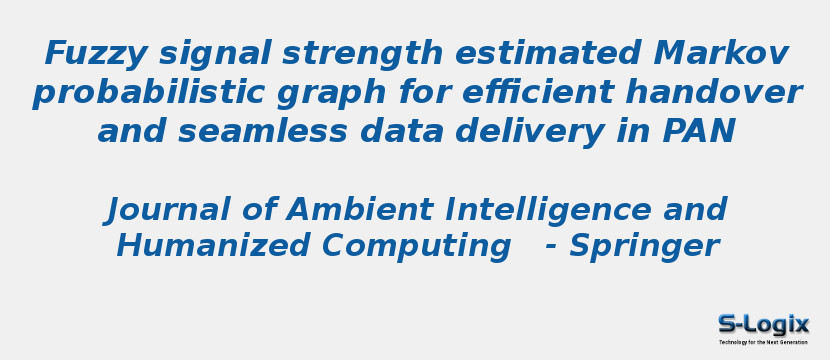Research Area: Wireless Sensor Networks
Seamless mobility management is an ability of the system to support the different services in personal area networks. A mobility management system is effectively designed for seamless mobile communication through the handover process. The handover is to transfer the data efficiently from one base station to another without any link failure. In order to improve the seamless data delivery with less handover delay, Fuzzy Signal Strength Estimation based on Stochastic Markov Graphical Model (FSSE-SMGM) is introduced in PAN. The PAN includes a number of mobile nodes. The mobile nodes are clustered in a more dynamic manner based on their communication range. Each cluster has a unique base station. When a mobile node moves out of its communication range, the centralized anchor node computes the Received Signal Strength (RSS) of the mobile nodes from the base station using two ray ground model. The model predicts the path losses between transmitting antenna and receiving antenna when they are in line of sight. FSSE-SMGM uses the fuzzy triangular membership function to evaluate the RSS with the threshold value. In addition, the direction angles degree of each mobile node from the current position towards the available base station is computed. Based on the signal strength and direction angle, the centralized anchor node switches the mobile node to the best available base station. Followed by, greater signaling cost is achieved during randomness nature over seamless mobility. After that, Stochastic Markov Graphical Model is used in FSSE-SMGM to improve the seamless data delivery through adjacent mobile nodes using state transition probability. The nodes with minimum distance are formed a chain with Markov property. This in turn minimizes the packet loss and ensures seamless data delivery between the mobile nodes. The simulations of proposed FSSE-SMGM and existing methods are carried out in terms of handover delay, seamless data delivery rate and data packet loss rate with respect to a number of data packets, and mobile speed. The simulation result shows that FSSE-SMGM improves the seamless data delivery rate and minimizes the data packet loss as well as handover delay.
Keywords:
Author(s) Name: D. Sridhar & C. Chandrasekar
Journal name: Journal of Ambient Intelligence and Humanized Computing
Conferrence name:
Publisher name: Springer
DOI: 10.1007/s12652-020-02034-7
Volume Information: volume 12, pages 5457–5470 (2021)
